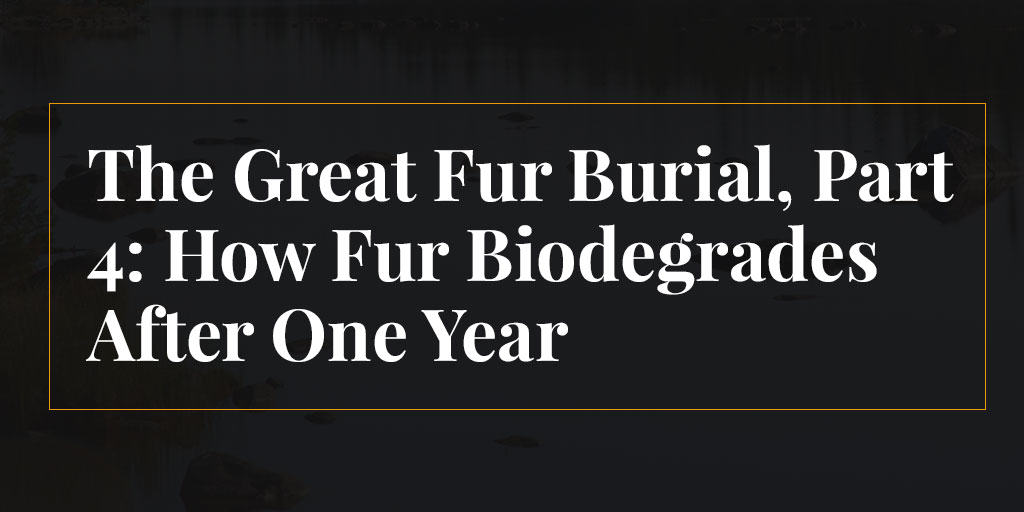
The fur industry is proud of the many ways in which fur is eco-friendly, including that after decades of use, fur biodegrades. In contrast, when fake fur made from petrochemicals reaches the end of its typically very short life, it goes to sit in a landfill until the end of time. Or does it? In pursuit of the truth, we decided to do a little experiment: the Great Fur Burial.
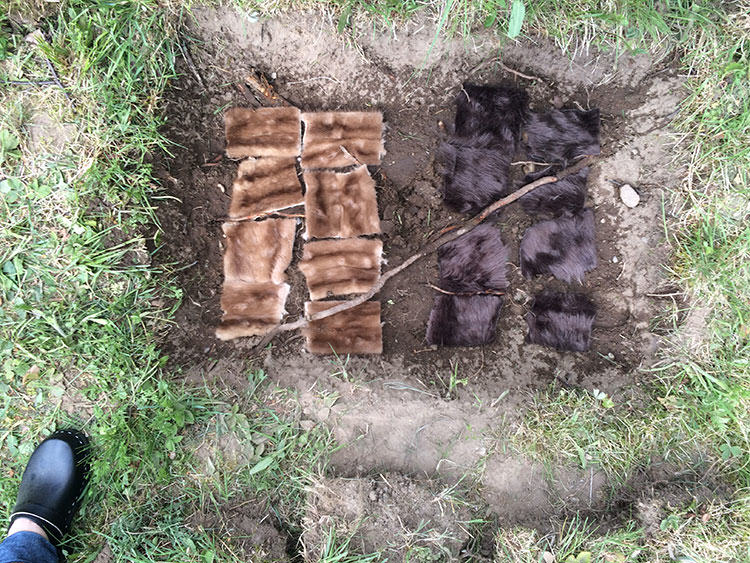
On May 14, 2016, we took a mink stole and a fake fur vest, cut them into equal-sized pieces, and buried them. Above is how the pieces looked on burial day. The plan was that after three months, six months, and then once a year for five years, we would unearth one piece each of the mink and fake fur to compare degradation rates. This experiment is hardly scientific, but it only has to show one thing: do they rot, or not?
One Year Later …
Last week we unearthed one of each fur sample, now one year old. Here is the burial site prior to exhumation.
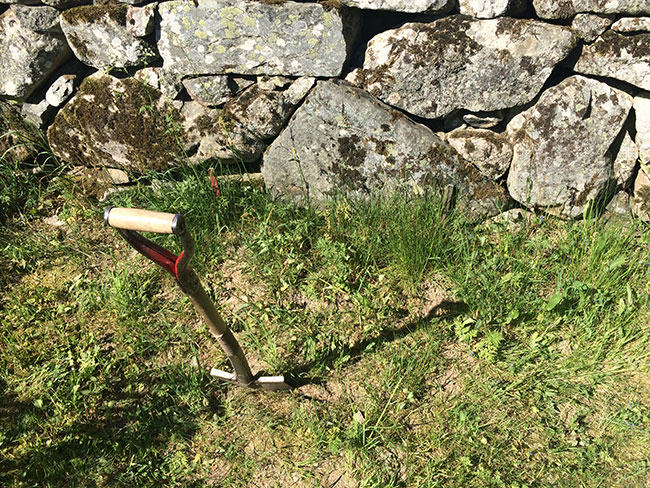
From our last dig, we had a good idea what to expect. The synthetic fur was easy to find, whereas the real fur, once located, called for delicate work with a wooden spoon and fingers to ensure it didn’t turn to dust.
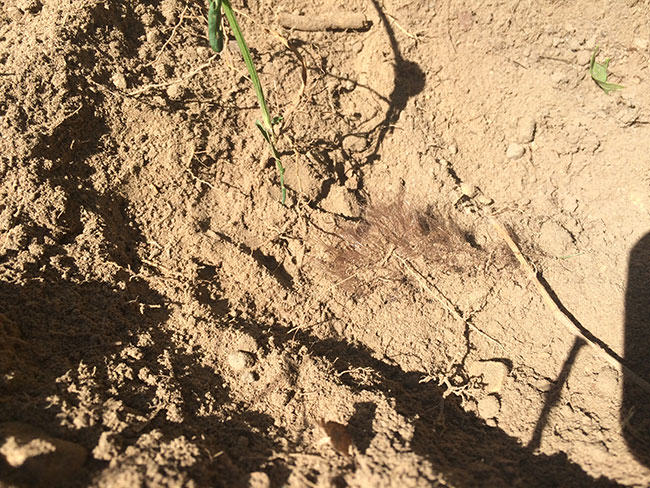
Here are the two samples once they were dug up, fake on the left and real on the right. The fake fur appears to be in good condition, while the real fur is seriously degraded, to say the least!
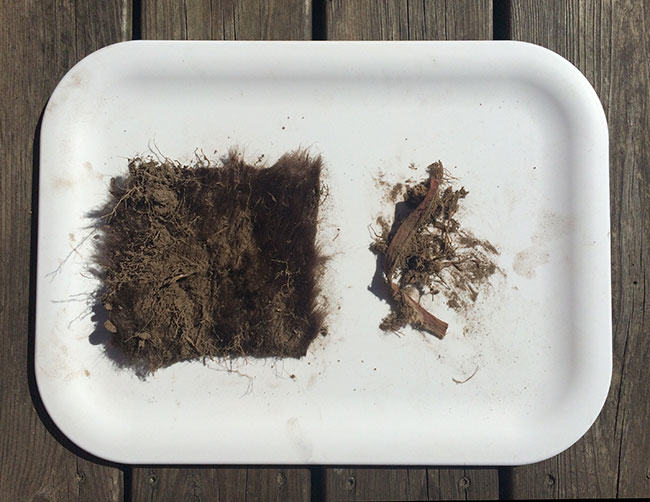
We gently shook off the dust and dirt from the samples, so we could get a better look.
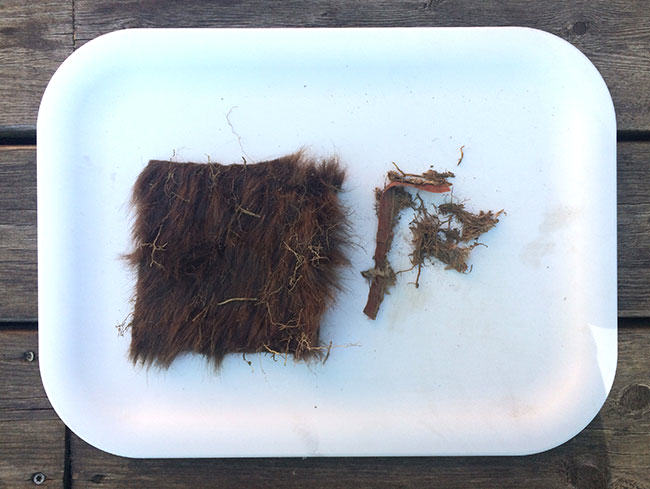
A closeup of the front of the fake fur shows that the “hair” is still in very good condition, aside from the fact that there are roots growing through it. With a bit of shampoo, it might almost be ready to wear!
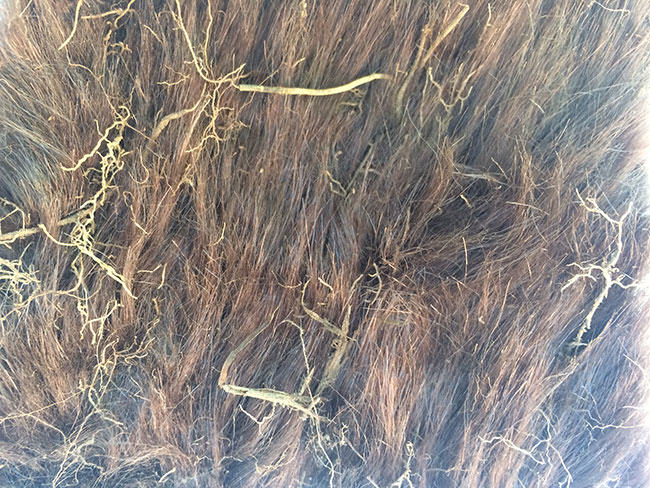
A closeup of the backing of the fake fur also shows it to be in good shape.
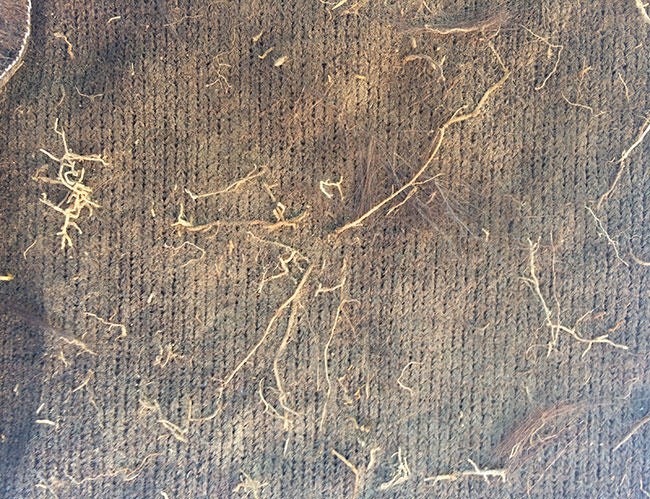
In contrast to the fake fur, the real fur is degraded to the point of being unrecognisable, and only has any integrity at all because of some binding and thread. When you look at the sample close up you can see a few hairs of fur left and some remnants of the leather, but the bulk of the sample consists of thread (cotton), the binding (either silk or synthetic) and roots. This is a very strong indicator that real fur biodegrades much faster than fake.
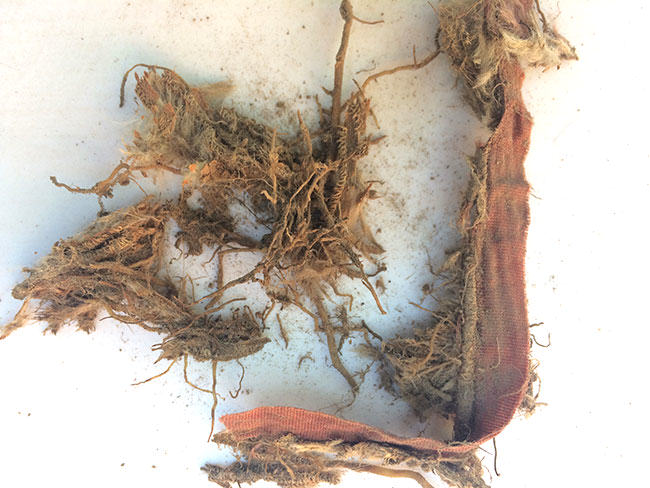
Summary
Equal-sized pieces of real and fake fur were buried side by side to test the common claim that real fur biodegrades while fake fur does not. After one year, the real fur is in an advanced state of degradation, with the hairs reduced to a few fine wisps, and a few shreds of leather held together by thread and backing. The fake fur, however, shows very little evidence of degradation, biological or otherwise. In fact, it is nearly intact.
As far as the real fur is concerned, we consider this experiment to be conclusive already, and a year from now, when next we exhume our samples, we fully expect to need a magnifying glass and tweezers to find any. But as far as the fake fur goes, the experiment has only just begun. Will it degrade at all, and if so, will it take five years, or until the end of time?
Read the first three installments of this experiment:
The Great Fur Burial, Part 1: Burial
The Great Fur Burial, Part 2: After Three Months
The Great Fur Burial, Part 3: After Six Months
SEE ALSO: New study compares natural and fake fur biodegradability. Conducted by Organic Waste Systems, Ghent, Belgium; commissioned by the International Fur Federation and Fur Europe, 2018.











Why don’t fur coats dissolve in the snow and rain? There is fur trim on a coat I have and it stands up to a lot of snow and rain for years.
This is a great demonstration!
I garuntee it will take a century at the least for the faux fur to show any degration.
Why is that new news? Animals die and return to the ground, as do humans. Taken from the scriptures. (Genesis)
That’s very true, Toni, but hopefully it will open people’s eyes to the fact that fake fur does not degrade. Of course, everyone knows this really, but advocates of fake fur choose to ignore it as an inconvenient reality.
Put the fake back in the ground and continue to report on it every six months or so. I’d love to see how long it takes to show any real indication of biodegrading.